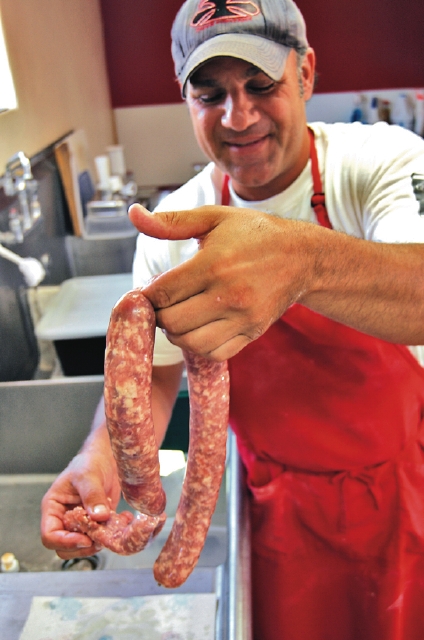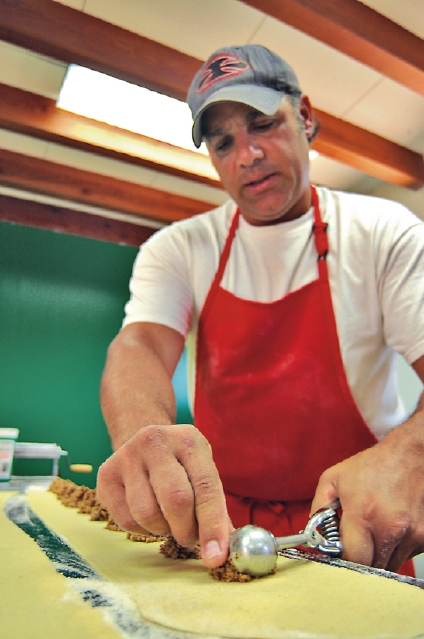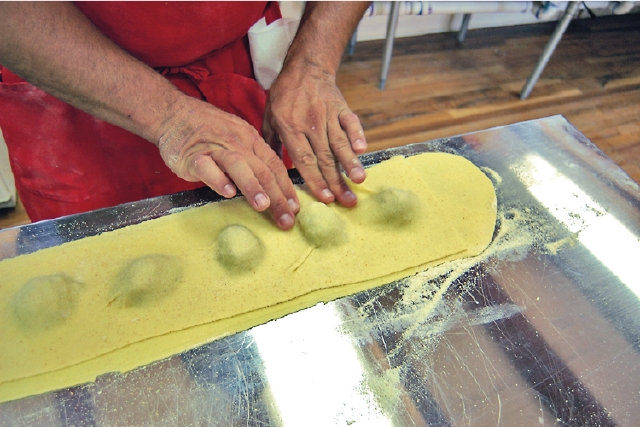Chewing The Fat
The ”Abe Froman” Of Albuquerque Talks About Sausage, The Spinach Scare And The Absolute Best Way To Eat Fresh Ravioli


A small ”ice cream” scoop is perfect for placing fresh sausage ravioli filling.
Wes Naman

Trimmed into large squares of fresh pasta and filling, these uncooked raviolis will sell for around $15 per dozen.
Wes Naman








